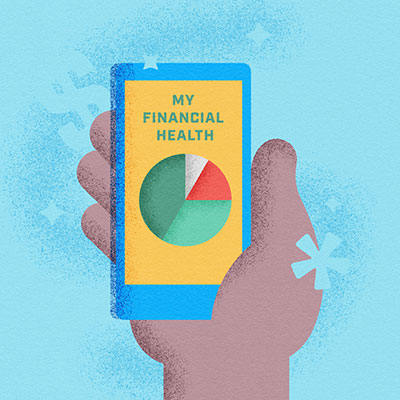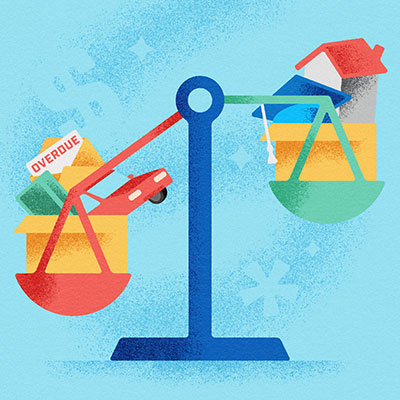How to reframe repayment in your bigger financial picture
Having debt weighing on your shoulders can be overwhelming for students and graduates. It’s no small thing, and it’s not uncommon. According to Statistics Canada, 49% of students in 2015 began their financial journeys with an average of $15,000 to $30,000 of debt.
But, Accounting instructor Stacey Cooper says that student debt doesn’t have to weigh you down or hold you back financially.
Student debt is just one part of a larger financial picture along with savings and investments. Where does it fit in a repayment schedule structured around credit cards, car payments, lines of credit and other loans? We chat with Cooper about how to feel less burdened by your debt, and discuss strategies for lightening the load sooner than later.
Learn about NAIT student funding options
Accept the debt
How do we look at debt without feeling like it’s debilitating? One thing to remember, Cooper says, is to remind yourself that it’s ok to have debt. “Just because you have debt doesn’t mean that everything has to pause until you pay it off. For most people, debt is sometimes a reality for us to get ahead.”
"Debt is sometimes a reality for us to get ahead.”
A student loan debt is “good” debt in the long-term because it’s an investment in our future and allows us to start growing. It’s not much different from a mortgage, in that you have something that’s a valuable asset.
Don’t make it worse
Don’t add “bad” debt to your student debt, says Cooper. Generally speaking, that is credit card debt.
That’s not to discourage anyone from using a credit card, Cooper stresses, especially if it’s needed to make ends meet.
But credit card debt is considered “bad” debt because of high interest rates – which include anything above 10%.
Be conscious about the type of debt being incurred, and try not to overspend when the rates are high.
Repay strategically
Financial aid at NAIT
NAIT supports some 4,000 students with more than $6 million in scholarships and bursaries each year. Learn more about student award and funding options.
Paying off the debt with the highest interest rate first is always the best strategy, even if it’s only a small amount of money. The less money you pay in interest, the more money you have in your pocket.
Then go to your medium interest rate. This is also where you can start making decisions that are right for you, says Cooper.
For example, if you’re financing a used car at 5%, it’s financially prudent to pay that off first. But if you’re financing a car at 1%, that’s very low and you could invest your money in a TFSA, put it in an RRSP, or even invest it if that’s something else that has a higher return than the interest you’d be paying on the loan.
 Save while you repay
Save while you repay
That investment creates good savings habits, which Cooper says should not be overlooked while repaying debts.
She encourages everyone, especially young people, not to prioritize paying down debt over putting money away for the future.
There might be some years where you can save more, and others when you save less. That’s ok, says Cooper. You’re still moving forward financially.
Just keep your spending in check as you go.
Talk about your debt, and your money
Cooper knows that money can be an emotional subject. For some, money might mean security. For others, it might mean freedom. Choosing the right approach depends on your income, goals and the amount of money you would like to save or pay off. These are conditions unique to you. Don’t compare your situation to others.
Money can be an emotional subject.
But get advice. Talk about this with experts and others who have been through similar circumstances. Cooper encourages everyone to address their finances directly. Unburdening yourself of your student debt all at once needn’t be the goal. But you can lessen the load over time with acceptance, openness and the right choices.
This story has been updated. It was originally published Oct. 20, 2021.